The Power Shift Every Leader Eventually Faces
At a certain point in every leadership coaches’ climb, the air thins. The technical mastery, strategic precision, and drive that once propelled success no longer get you further up the mountain. You reach a point where what got you here won’t get you there.
This is the crossroads where many executives find themselves — overextended, overinvolved, and underfulfilled. They carry the weight of every decision, feel responsible for every failure, and wonder why their high-performing teams can’t seem to take full ownership.
At CO₂ Coaching, we call this the telling trap. It’s what happens when leaders keep solving, directing, and deciding — instead of empowering, questioning, and coaching.
From Telling to Asking: The Leadership Coach Shift That Changes Everything
Gary B. Cohen, founder of CO₂ Coaching and author of Just Ask Leadership, discovered through decades of coaching and executive experience that great leaders don’t provide all the answers — they ask the right questions.
The best leaders aren’t defined by control; they’re defined by curiosity. They create conditions where others can think, decide, and act. And in doing so, they multiply the organization’s capacity to lead itself.
Ask, don’t tell isn’t just a philosophy — it’s a power shift. It moves leaders from the center of every decision to the edge of every possibility.
Why Telling Fails — Even for Smart, Successful Leaders
When you’ve built your career on being the person with answers, it’s hard to let go of that identity. But continuing to lead by telling has a cost:
- It bottlenecks growth. Teams wait for direction instead of taking initiative.
- It erodes accountability. People follow orders, not ownership.
- It feeds ego over empathy. Leaders seek affirmation instead of understanding.
- It limits scalability. An organization can only grow as fast as one leader’s capacity to decide.
Asking questions, on the other hand, invites curiosity and accountability. It shifts leadership from command to conversation. It transforms followers into partners.
The Four Shifts Every Leadership Coach Must Make
1. Clarify Ownership: “Whose decision is it?”
Executives often take on decisions that belong to others — out of habit, ego, or fear. The result? Teams underperform, and leaders burn out. The first shift is to define decision rights clearly. Empower the people closest to the work to own their choices. Your role is to guide, not to guard.
2. Lead with a Guiding Question
Every great leader operates from a core question — a north star that aligns decisions and behaviors. For some, it’s “What impact do I want to create?” For others, it’s “What would make my team unstoppable?” Asking the right guiding question helps you and your organization stay oriented amidst complexity.
3. Manage Ego — Don’t Let It Manage You
Ego can be both the fuel and the fire of leadership. It propels achievement but can also block growth. Coaching helps leaders recognize when their ego is driving decisions rather than wisdom. When leaders make space for others’ ideas and ambitions, they don’t lose control — they gain collective intelligence.
4. Listen Like a Leader
Listening is the most underdeveloped executive skill. When you truly listen — without rushing to respond or solve — you build trust and open access to insight. Listening well signals humility and presence, two of the most powerful forms of influence available to any leader.
When Leadership Coaching Becomes a Strategic Advantage
Many organizations invest in leadership development, but few treat it as a business strategy. CO₂ Coaching partners with executives and teams to turn asking into an organizational muscle — not just a personal practice.
Our clients report sharper decision-making, stronger alignment, and more engaged teams. They stop firefighting and start forecasting. They build systems that sustain performance long after the initial engagement ends.
Executive coaching with CO₂ isn’t about fixing leaders — it’s about expanding what’s possible through them. We help leaders see the system, not just the symptoms, and lead with greater self-awareness, curiosity, and conviction.
The ROI of Curiosity
When leaders shift from telling to asking, the entire culture transforms.
- Decision quality improves because diverse thinking is invited.
- Accountability increases because ownership is distributed.
- Engagement rises because people feel heard, trusted, and respected.
- Innovation accelerates because ideas flow freely, not hierarchically.
This is why some of the most complex, high-performing organizations in the world choose CO₂ Coaching. We don’t just develop leaders — we develop systems of leadership.
Ready to Lead Differently?
If you’re a CEO, founder, or senior executive who feels the weight of leadership growing heavier, it’s time to explore a different path.
CO₂ Coaching offers executive and team coaching designed for complexity — where transformation starts with a single question.
→ Schedule a confidential conversation with a CO₂ Coach
and discover how asking better questions can unlock higher performance across your organization.
Or, if you’re exploring how to elevate your leadership team to its next peak:
→ See how CO₂ Coaching helps leaders reach their next peak.
Because the higher you climb, the more essential it becomes to breathe the air of curiosity, not control.
FAQ: Ask, Don’t Tell Leadership
Q: How is executive coaching different from leadership training?
Leadership training teaches skills. Coaching transforms the mindsets and beliefs that drive those skills — making change sustainable and systemic.
Q: Who benefits most from CO₂ Coaching?
CEOs, founders, and senior leaders navigating complexity, rapid growth, or organizational transformation — especially those ready to scale from doing to leading.
Q: How quickly can I expect results?
Many clients notice immediate improvements in clarity, communication, and delegation. Lasting transformation deepens over several months as leaders integrate new ways of asking, listening, and empowering others.



